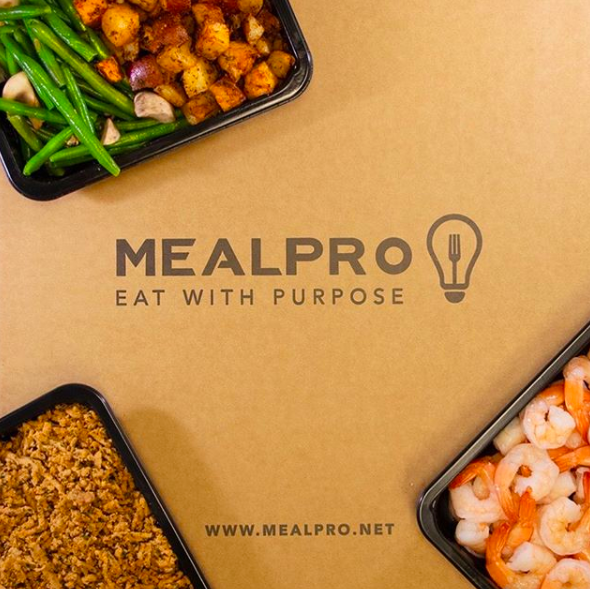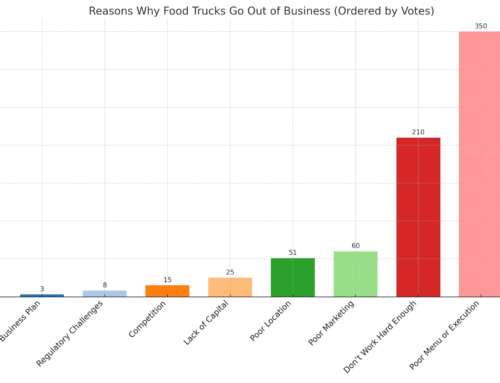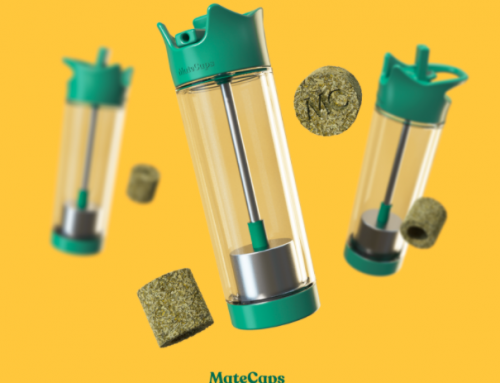Hello! Who are you and what food business did you start?
Hi, my name is Andy Sartori. I am the founder of MealPro, a food delivery startup that specializes in pre-cooked and pre-portioned meals. Our typical customer is a busy, health conscious individual who has no time to shop, prep, portion and cook meals to support their nutrition objectives, hence our call-out “Eat with Purpose”.
Our meal plans vary from high protein to low carb and your portion sizes can be customized based on your activity and nutrition goals. Our website includes a unique calorie calculator that customers use to help fine tune their nutrition and design the meal plan they need.

What are your ballpark monthly or annual revenue numbers?
Since I started the company three years ago we have doubled in size every year. We have served about 5,000 customers across the US, currently have 11 team members (counting full-time and part-time) and are hitting a current annualized revenue run rate of one million dollars.
How did you come up with the idea?
I hatched the business idea for MealPro almost by chance, while I was out with two friends to grab a bite. They were different in a lot of ways – gender, lifestyle, body type, and much more – and both were on a diet, but they ordered the same meal. One of my friends was eating too much for her diet, while my other friend was eating too little.
I realized that restaurants are standard but people are unique, and recognized the business opportunity for customized meal prep. So, I started MealPro.

Take us through the process of developing and testing MealPro:
My first venture – commodity food and beverage products distribution – was actually a “learning experience”, to put it mildly. The market was difficult to penetrate because its low barriers to entry allowed in a multitude of competitors and stymied growth potential. There was little technology leverage, and logistics was a nightmare.
So, I came up with its polar opposite: with our current online meal delivery service our offering is customized, the technology barriers to entry are high, and the growth prospects are just huge. Also, my initial venture gave me a glimpse on the tastes of a significant sample of professionals in my area, and allowed me to build the first menu – small, but appealing.
I identified a local commercial kitchen that was able to produce my menu, albeit at a cost higher than what I had expected. I decided to go ahead in spite of the financial challenge, because this was the only way to get real feedback from my target market.
It worked. I quickly realized what did sell and what did not, I augmented MealPro’s menu to cater to the needs of the more responsive customer segments, and we gradually but surely started assembling a segment of returning customers. The business model was proven, but we were suffering under the constraints of the commercial kitchen we were contracting with.
At first glance our menu was small (one board) and appeared to have less variety than what other companies in the space offered, however we overcompensated for this by offering larger portion sizes, and being more flexible with how a user could customize their meal. The abundant food quantity and ease of customization resonated well with users.
Describe the process of launching MealPro
After we left our partner the next step was to find our own commercial facility. After weeks of searching, I found a run down Donut Shop 150 miles from my home town in a suburb of Sacramento, CA. I signed the lease in September of 2017, invested $20k in equipment/leasehold improvements and shaved another $20k for working capital.
The place we rented was a former donut shop so I reinvest all my funds into new equipment, and I became highly skilled at stretching the limits of my credit cards. The total cost for this renovation was about $40,000. MealPro was on shaky ground, and any small issue would have derailed my efforts for good.
One of the biggest challenges was to find skilled and stable personnel. MealPro’s approach is that quality comes first and foremost, so I took pains to interview dozens of candidates until I was satisfied I had identified the best. There were days when I spent all my time interviewing, it could become a frustrating process.
I also realized that to retain the best chefs I needed to pay them above market, so I did, against the advice of my controller, and I was able to build a team I could trust. As I look back, I can say that the core organization driving our growth today was the result of those long months of screening and that the time I invested in developing our staff is the best investment I made.
Of course, our cash position suffered in those early days, to the point that I started asking myself how long I could go for. I am sure everybody who has launched a startup knows that cold feeling in your stomach every time you look at your balance … it’s always a bit lower than you expected it to be, and your constituents keep asking hard questions about the turnaround. I took it as an adrenaline injection that pushed me to try even harder.
Finally, the market responded. Our customers kept reordering, our web traffic grew and grew, and most importantly cash started rolling in. As a result of our increased momentum, our vendors started taking us seriously, we improved prices and margins, which allowed us to give back to our market in terms of enhanced offerings, loyalty programs, and more. Finally, we were in business!
Since launch, what has worked to attract and retain customers?
We have established our presence by focusing on one message – healthy meals for active individuals – and we built our web presence around this. We made the conscious decision to exclude some promising market segments from our strategy, like specialty meals for people with medical conditions, because it would have diluted our brand and ultimately confused our prospects.
Some startups attempt to build a portfolio of messages, to broaden their audience and hopefully increasing the response, but I do not believe in “throwing the spaghetti against the wall and see what sticks”.
Our focus allowed us to build a presence on social media, with videos addressing best practice in training and nutrition that bring independent value to casual readers and of course motivate them to learn more about our offering.
Any opportunity to generate content is really a sales call that the power of the web magnifies thousands of times, and that search engine algorithms latch on to enhance rankings. Our strategy is based three tears including organic web traffic, social media, and some ad campaigns, where we seek to capture all synergies.
Initially I created much of our digital content. I had a limited budget and allocated almost all of payroll towards staffing for operations. Part of the challenge in building a business is that as an entrepreneur you need a broad range of skills – staff where you can and fill in the gaps yourself where you can’t staff.
Outside of cyberspace, we have built a network of partners, e.g. personal trainers, nutritionists, fitness professionals, gym operators, that can act as a reference for new customers and can provide invaluable feedback on emerging needs, inflections in demand, as well as immediate evaluation for new products.
The group of personal trainers and industry professionals that I initially created was based on friends and acquaintances I had made in years prior. I would give a few meals for a customer referral. It worked pretty well and we have now opened this up to our whole customer base under the umbrella of “refer a friend”. Every time you refer a friend you earn rewards points in your MealPro account that you can apply towards MealPro merchandise or free meals.
We are cautious about partnerships with the likes of Amazon, particularly at this stage of our development. Our pricing policy is to give back to our customers any increase in productivity, any cost efficiency that we can achieve as we ramp up, keeping just the healthy margins to stay self-funded.
A distribution giant like Amazon would demand a sizeable share of those margins, offering a leap in volumes in exchange. However, our financial muscle might not be enough to handle the explosion in demand, challenging our whole business model.
What does the future look like?

As a self-funded venture, our first objective was to become cash-flow positive, and we have achieved that – just in time – in early 2018. Our next financial priority was to produce enough funds to invest in process automation, to stabilize quality at the highest level and to enable the ramp in volumes.
We experimented a lot with our packaging, exploring lid stock sealing, vacuum sealing, and other techniques consistent with the requirements of our cold chain. This required a short term sacrifice in profits that however paid substantial dividends in customer retention and product acceptance.
As a pure online store, a substantial item in our CoGS is carrier costs. With this commodity like with all others we seek a two-vendor model, regardless of the enticements we receive to turn over all of our business to one partner. We believe that the inherent competition we establish benefits us and our customers beyond the small cost penalty that we may incur.
This frame of mind is also part of what drives us in our online strategy around SEO and social media ads. We applied retargeting techniques with products such as AdWords to improve conversion and implemented an email automation for abandoned cart recovery. Even though the return on the former is still a bit dubious.
Our goal to enhance our web presence is still to improve on our content – this is an area where we expect to expand on our partnerships in the near future. It is a priority for our growth.
What Have You Learned by Starting MealPro?
The task list that stares at me every day can be broken down into two major buckets: Growing the company and operating the company. Most of the day is devoted to operations – negotiating with vendors, managing staff and … fighting fires – there is no shortage of that!
Business-as-usual tasks are like a gas, which fills all the space you give it. Set yourself a limit! Do not allow urgent matters to take control of you.
As I keep repeating to myself, our success ultimately depends on how good we are with growth oriented tasks, whether they involve scouting real estate for a new facility, interviewing a new chef, or experimenting with packaging options for a new product line.
I try to listen to customers, employees, partners to understand what they need and how they think about their nutrition, even before they can articulate it in a conscious fashion.
I developed an approach to prioritize my ideas based on the impact they have on our customers. What brings the most people the most value tops the list. I do a detailed feasibility assessment and if the idea still has business merit, I put together a realistic action plan that takes into account the constraints I am operating under.
I do not believe in throwing money at a problem, until you have taken the time and effort to mitigate everything that can go wrong – because it usually does.

What tools do you use in your business?
I recommend a food processor. It is a great productivity tools for slicing and dicing fresh vegetables.
We also have an Escali 13lb scale and a Winco 60lb scale. These come in handy for the chef to cook in both large and small batches by keeping strict recipe compliance.
Our Zebra kitchen printer is a real life-saver for the line cooks. The printer prints an itemized list of the items in a customer’s order and makes is an easy reference to organize and package the meals.
What have been the most influential resources for getting started?
I recommend read books gradually as solutions to the challenges you encounter. As you progress in your business you will inevitably come across hurdles that you could not have predicted at the outset.
Keep a catalog handy of your local learning center with available online or in person classes. As you encounter knowledge gaps try to find online documents or books that can help you progress in your company.
This will help ensure that your learning is very targeted and it will give you plenty of practice by providing a real-life scenario that you can apply your learning to.
My personal favorites:
Seven Habits of Highly Effective People by Stephen R. Covey
Rich Dad Poor Dad by Robert T. Kiyosaki
How to Win Friends and Influence People by Dale Carnegie
Advice for Food Entrepreneurs
- Prioritize your ideas based on impact and let your desire to make your customers successful drive your product development roadmap.
- Be driven but not stubborn. If what you are working on does not work, dump it and cut your losses.
- Mind the details, but think big. Entrepreneurship is hard, growth is what makes it worthwhile.
- Be focused on listening to the market. The next trend is out there already, be the first to recognize it.




